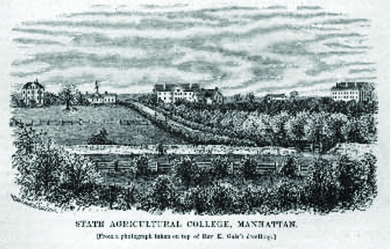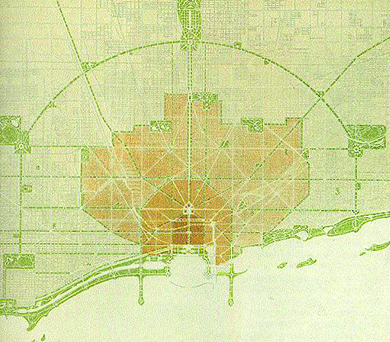| << Chapter < Page | Chapter >> Page > |

College curricula also changed at this time. Students grew less likely to take traditional liberal arts classes in rhetoric, philosophy, and foreign language, and instead focused on preparing for the modern work world. Professional schools for the study of medicine, law, and business also developed. In short, education for the children of middle-class parents catered to class-specific interests and helped ensure that parents could establish their children comfortably in the middle class as well.
While the working poor lived in the worst of it and the wealthy elite sought to avoid it, all city dwellers at the time had to deal with the harsh realities of urban sprawl. Skyscrapers rose and filled the air, streets were crowded with pedestrians of all sorts, and, as developers worked to meet the always-increasing demand for space, the few remaining green spaces in the city quickly disappeared. As the U.S. population became increasingly centered in urban areas while the century drew to a close, questions about the quality of city life—particularly with regard to issues of aesthetics, crime, and poverty—quickly consumed many reformers’ minds. Those middle-class and wealthier urbanites who enjoyed the costlier amenities presented by city life—including theaters, restaurants, and shopping—were free to escape to the suburbs, leaving behind the poorer working classes living in squalor and unsanitary conditions. Through the City Beautiful movement, leaders such as Frederick Law Olmsted and Daniel Burnham sought to champion middle- and upper-class progressive reforms. They improved the quality of life for city dwellers, but also cultivated middle-class-dominated urban spaces in which Americans of different ethnicities, racial origins, and classes worked and lived.
Olmsted, one of the earliest and most influential designers of urban green space, and the original designer of Central Park in New York, worked with Burnham to introduce the idea of the City Beautiful movement at the Columbian Exposition in 1893. There, they helped to design and construct the “White City”—so named for the plaster of Paris construction of several buildings that were subsequently painted a bright white—an example of landscaping and architecture that shone as an example of perfect city planning. From wide-open green spaces to brightly painted white buildings, connected with modern transportation services and appropriate sanitation, the “White City” set the stage for American urban city planning for the next generation, beginning in 1901 with the modernization of Washington, DC. This model encouraged city planners to consider three principal tenets: First, create larger park areas inside cities; second, build wider boulevards to decrease traffic congestion and allow for lines of trees and other greenery between lanes; and third, add more suburbs in order to mitigate congested living in the city itself ( [link] ). As each city adapted these principles in various ways, the City Beautiful movement became a cornerstone of urban development well into the twentieth century.

The burgeoning cities brought together both rich and poor, working class and upper class; however, the realities of urban dwellers’ lives varied dramatically based on where they fell in the social chain. Entertainment and leisure-time activities were heavily dependent on one’s status and wealth. For the working poor, amusement parks and baseball games offered inexpensive entertainment and a brief break from the squalor of the tenements. For the emerging middle class of salaried professionals, an escape to the suburbs kept them removed from the city’s chaos outside of working hours. And for the wealthy, immersion in arts and culture, as well as inclusion in the Social Register , allowed them to socialize exclusively with those they felt were of the same social status. The City Beautiful movement benefitted all city dwellers, with its emphasis on public green spaces, and more beautiful and practical city boulevards. In all, these different opportunities for leisure and pleasure made city life manageable for the citizens who lived there.

Notification Switch
Would you like to follow the 'U.s. history' conversation and receive update notifications?